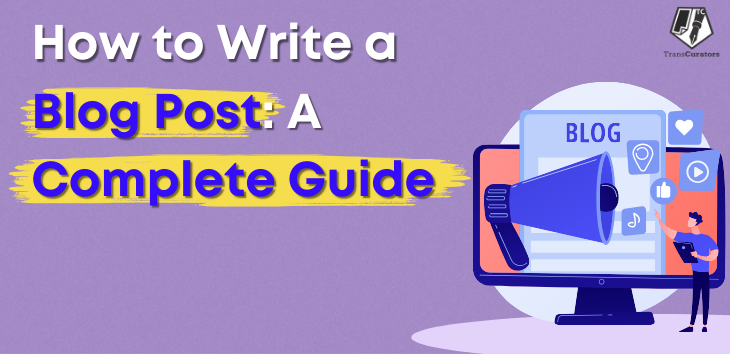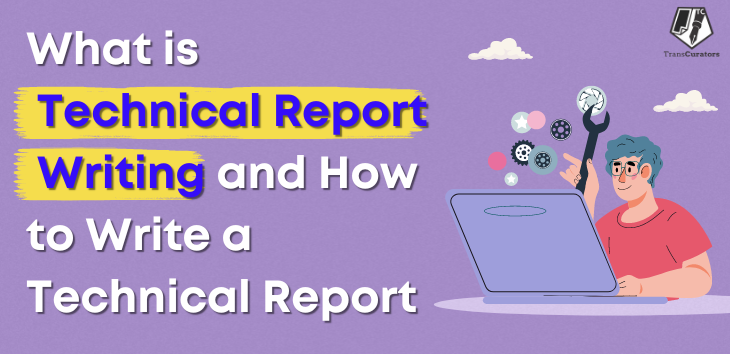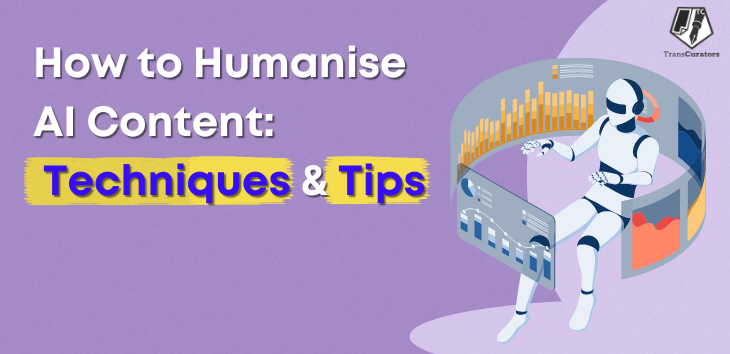
The incredible world of blogging is open to everyone. If you’re brimming with innovative ideas or passionate about sharing knowledge, creating blog posts is your perfect gateway to delve into the exciting world of content creation. With some planning and creativity, you can craft engaging blog posts that inform and resonate with your readers. Though writing a blog post may seem daunting, you can produce informative and successful content; all you need is a clear plan and a step-by-step approach, irrespective of whether you’re just starting or want to improve your skills. In this guide, you will learn how to write a blog that attracts and retains readers. Ready to start blogging? Let’s get started!
Understanding Blog Posts: The Cornerstones of the Online World
In the modern digital era, information flows freely across the web. One powerful tool for sharing knowledge and flaring conversations is a blog post. But what exactly is a blog post? A blog post is a piece of writing published on a blog or website with regularly updated content, usually written in an informal or conversational style. Every blog post has an exclusive topic or theme and offers knowledge, analysis, opinions, or personal experiences. Blog posts vary in length and format, from quick updates to comprehensive manuals.
Here’s a Step-by-Step Guide on How to Write a Blog Post
Step 1: Understand Your Audience
Before you start writing, you need to determine your target audience. Understanding your audience lets you personalise your content according to their requirements, interests, and pain zones. Begin by asking yourself a few fundamental questions: Who are my readers? What are their interests? What difficulties are they trying to solve? Research to know about your target audience. Look at demographic data, read comments on similar blog posts, and interact with your target audience on social media to get an idea of what they want. Understanding your target audience will impact your blog post’s tone, style, and content, making it more relevant and exciting for your readers.
Step 2: Choose a Compelling Topic
Once you determine your audience, your next step is to choose a topic that will spark their interest. Your topic should be current and significant and provide value to your audience. Consider typical concerns in your niche or questions often asked by your target audience. Make a list of potential themes and use tools like Google Trends, keyword planners, and social media polls to gauge interest. Choose a topic that not only attracts your readers but also aligns with your expertise and the objectives of your blog. An interesting topic is the foundation of a successful blog article.
Step 3: Do Your Research
Research is the foundation of any great blog post. It adds credibility and depth to your work. Begin by collecting information from trustworthy sources. Look for recent studies, professional opinions, and data that support your topic. Take notes and arrange your research. This will allow you to structure your blog content effectively and ensure that you cover all relevant issues. To maintain the authenticity of your site, always verify the sources you use for accuracy. Comprehensive research allows you to deliver essential insights and distinctive content, differentiating your blog from others.
Step 4: Create an Outline
An outline serves as a road map for your blog post, maintaining a consistent and logical flow of ideas. Always start with the critical issues you want to discuss and sequence them rationally. Divide each primary point into subpoints to create a thorough framework. Your outline must consist of an introduction, body, and conclusion. The introduction must captivate the reader while conveying the primary concept. The body paragraphs should dive into the topic, discussing each significant argument. The conclusion should sum up the major points and provide a call to action. A well-structured outline assists in keeping your writing focused and organised.
Step 5: Write an Engaging Introduction
Your introduction establishes the tone for the rest of your blog content. It should capture the reader’s interest and motivate them to read further. Start with a captivating fact, a question, or a strong remark. Introduce the central motif of your blog post and explain why it is relevant to your readers. Give them a reason to continue reading. A compelling introduction hooks readers and creates hope for the rest of the post.
Step 6: Develop the Body of Your Post
The body of your blog post where you discuss the details of your topic. Each significant point in your outline should become a body section. Begin each part with a clear subheading to make the content easier to comprehend. Write brief, to-the-point paragraphs to keep readers interested. Bullet points, numbered lists, and visuals such as photographs or infographics can break up the content and make it simpler to understand. Each paragraph should be focused on a specific idea, and all ideas must support the main topic. This strategy makes the content clear and easy to understand.
Step 7: Use Visuals and Examples
Visuals and examples can benefit your blog content by making complex information easier to understand. Use visuals, infographics, charts, and videos to support your claims. Visuals not only enhance your blog’s appearance but also explain and support your views. In contrast, examples provide practical applications of your concepts. Examples make the contents more relevant and understandable. Using pictures and examples in your blog posts effectively can make them more exciting and informative.
Step 8: Write a Strong Conclusion
A firm conclusion completes your blog post and supports your main ideas. Summarise the key lessons from your writing and explain why they are essential. This helps to strengthen the information in your readers’ minds. End with a call to action. Encourage your readers to leave a comment, share the post, or interact with your content in any way. A fair ending creates a lasting impression and encourages your readers to take the next step.
Step 9: Edit and Proofread
Editing and proofreading are required steps in the writing process. Check the flow, consistency, and clarity of your writing first. Ensure each paragraph transitions easily into the next and that your arguments are logically sound. Check for grammatical, spelling, and punctuation mistakes. Reading your blog loudly might help you detect errors you would have missed when reading silently. Consider using editing tools or have someone else review your blog. Carefully editing and proofreading guarantee that your blog post is polished and professional.
Step 10: Optimise for SEO
Search Engine Optimization (SEO) is paramount for making your blog posts discoverable. You can incorporate relevant keywords in your title, headings, and content. This helps search engines understand your post better. To improve your blog’s SEO, include meta descriptions and alt text for pictures. Always make sure that your blog post is mobile-friendly and loads quickly. By optimising for SEO, you boost the likelihood of the blog post and help it appear higher in search results, drawing more readers.
Step 11: Promote Your Blog Post
After you’ve published your blog post, you must promote it to reach a larger audience. Share your post on social media, split it to your email list, and join in discussion forums regarding your topic. Use interacting samples and images to attract interest on social media. Ask your readers to share your post with their networks. Effective promotion increases your blog’s exposure and brings more visitors to your website.
Step 12: Engage with Your Readers
Engaging with your readers fosters the development of a community around your blog. Answer queries and comments on your blog and social media. This encourages interaction and conveys to your readers that you appreciate their opinions. Ask for feedback and suggestions for the following posts. Interacting with readers builds reader loyalty and provides insightful information on what your audience wants to see more of on your blog.
Step 13: Analyse Your Performance
Analysing the performance of your blog post enables you to understand what works and what does not. Use Google Analytics to monitor page views, time on page, and bounce rate. Evaluate which posts perform best and attempt to identify trends. Use this data to improve your content strategy for better future blog posts. Regular analysis keeps you on track and helps you build your site successfully.
Step 14: Keep Improving
Blogging is an ongoing process that can constantly be improved. Stay updated on the latest blogging trends and best practices. Continue to improve your writing skills and experiment with multiple types of content. Ask for feedback from your readers and peers to learn more about improving. Be open to new ideas and willing to adapt to them. Continually improving keeps your blog fresh, engaging, and valuable to your readers.
Pro Tip: Your blog post’s title is often the first thing readers see, so it needs to be compelling. It should precisely reflect the content of your post and be clear and concise. Incorporate powerful, descriptive language to pique interest and draw readers in. Consider including numbers, questions, or how-to terms in your title. For instance, “How to Create Engaging Content” or “10 Tips for Writing an Excellent Blog Post.” An attention-grabbing title encourages readers to click on your content.
Know more how to drive conversion using blog post.
Purpose of Blog Posts
Blog articles serve a variety of significant purposes in the digital world. They offer a forum for exchanging information, thoughts, and knowledge on various issues. By providing good information, bloggers can educate readers, answer typical queries, and solve problems, promoting themselves as experts. Additionally, blog posts are crucial for search engine optimization (SEO). Regularly maintained blogs containing important keywords boost a website’s popularity in search engine results, resulting in organic traffic. This excellent exposure results in more interaction and even more business conversions.
Blogs facilitate community building and involvement. Bloggers can interact directly with their readers by allowing comments and discussions, building a sense of community and loyalty. The audience’s wants and preferences are revealed via this interaction, which also yields insightful feedback. On top of that, blog posts are helpful instruments for personal and brand expression. They allow individuals and businesses to convey their thoughts, ideas, and stories to create a distinct brand identity and interact with their target audience on a deeper level.
The Power of Blog Posts: Why They Are More Effective
1. Fostering Community and Loyalty via Interaction
Blog posts outshine many other types of communication for a variety of reasons. One of the primary benefits is their capacity to establish a strong connection with readers. Unlike traditional media, blogs offer an interactive platform for users to connect directly with the content. They may comment, ask questions, and share content, resulting in a two-way conversation that fosters community and loyalty. This engagement deepens the writer’s bond with the audience while providing significant feedback and insights.
2. Establishing Expertise and Trustworthiness
The second vital benefit of blog posts is their ability to build authority and trust. Bloggers who consistently write high-quality, informative posts can position themselves as field experts. It is essential to develop trust with the audience. Readers are more likely to return to a blog that they consider a trustworthy source of information. This trust translates into higher customer confidence in businesses, which may substantially impact purchase decisions.
3. Elevating Visibility Through SEO Mastery
Another area where blog posts excel is search engine optimization (SEO). Regularly updated blogs with relevant keywords increase a website’s exposure in search engine rankings. Being more visible increases organic traffic, which is necessary for expanding your audience without paying for expensive sponsored advertising. Blogs can go extensively into topics, offering in-depth information that uses keywords well and improves search engine optimization.
4. Creativity and Flexibility
Moreover, blog posts provide enormous flexibility in content creation. Writers can experiment with several formats, such as tutorials, opinion articles, interviews, and case studies, to find which resonates best for their audience. This variation keeps the content fresh and entertaining, avoiding reader boredom and retaining interest over time.
5. Connecting on a Personal Level
Personalization is another significant aspect of blogs. Writers can share their stories, experiences, and perspectives, making the content more relatable and exciting. Personal narratives help the writer or brand, creating a stronger emotional connection with the audience. Such a connection has the potential to increase engagement and loyalty when contrasted with more impersonal types of communication.
6. Maximising Impact while Minimising Cost
Cost-effectiveness is another noteworthy advantage of blogging. Creating and maintaining a blog costs far less money than traditional advertising methods. Blogs can reach a worldwide audience through captivating content and promotion techniques, resulting in massive traffic and engagement at minimal costs.
Conclusion
Writing a blog post can initially seem challenging, but an organised, step-by-step approach makes the process easier and fun. Following these steps will allow you to consistently write blog posts that educate, entertain, and connect with your readers on a deeper level. Keep practising. Remember: practice makes perfect. The more you write, the better you’ll get at crafting engaging blog content. By improving your skills, you’ll see your blogging efforts pay off. Are you ready to take your blog to the next level? Learn how TransCurators can help you write high-quality content that interests your audience and drives traffic to your blog. Visit TransCurators today to elevate your blogging game! Happy blogging!
Frequently Asked Questions
A1. The initial steps include:
Pick a topic that interests you and your audience.
Conducting thorough research to gather data.
Outline to arrange your ideas and organise your content.
A2. Select a topic relevant to your audience’s interests, aligns with your blog’s niche, and addresses current trends or common problems. Tools like Google Trends, keyword research, and audience surveys can help identify popular topics.
A3. A blog post typically includes a title, introduction, main body (with subheadings and paragraphs), conclusion, and a call to action. Additional elements can include images, links to other articles, and social sharing buttons.
A4. The ideal length of a blog post relies on the topic and audience. Generally, posts should be at least 500 words to cover the subject adequately. However, longer posts (1,000-2,000+ words) often perform better in search engines and provide more in-depth information.
A5. Editing and proofreading are essential for ensuring your blog post is clear, concise, and error-free. Review your content for grammatical and spelling mistakes, readability, and flow. Consider using an application like Grammarly or Hemingway for help.








